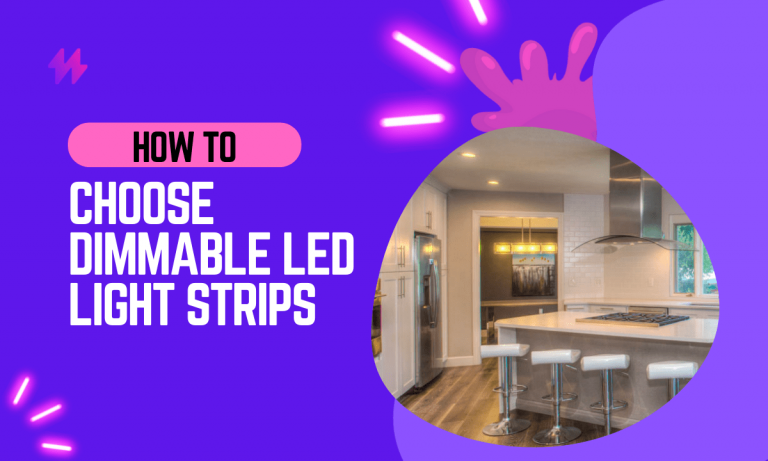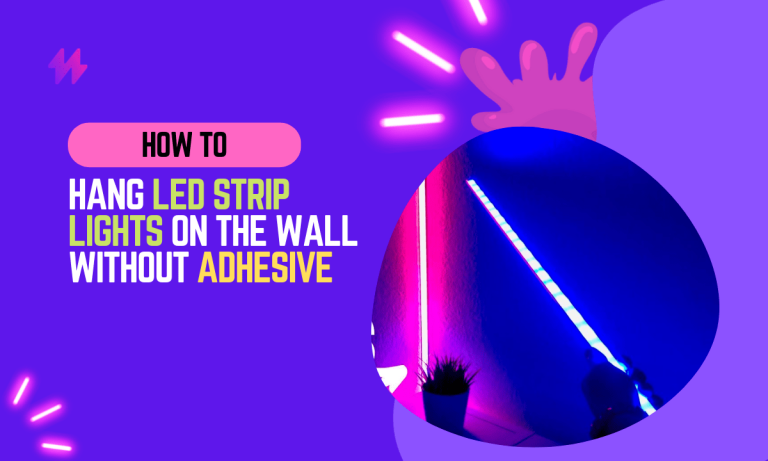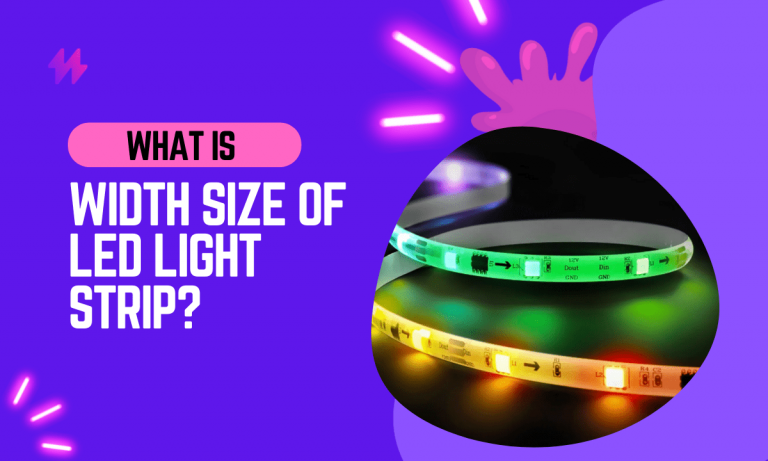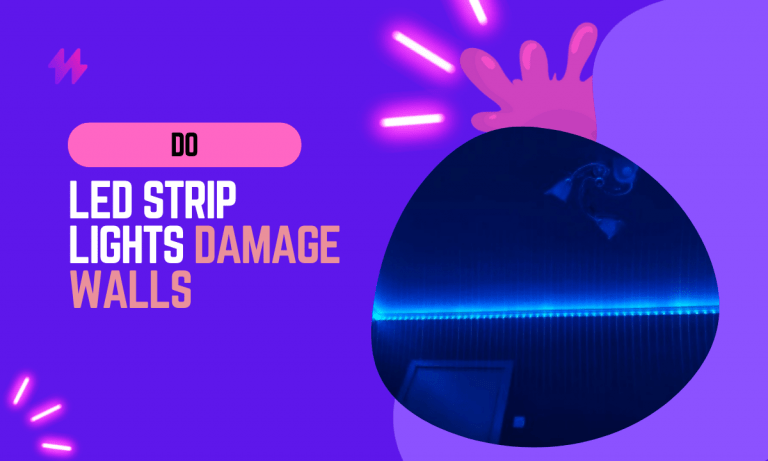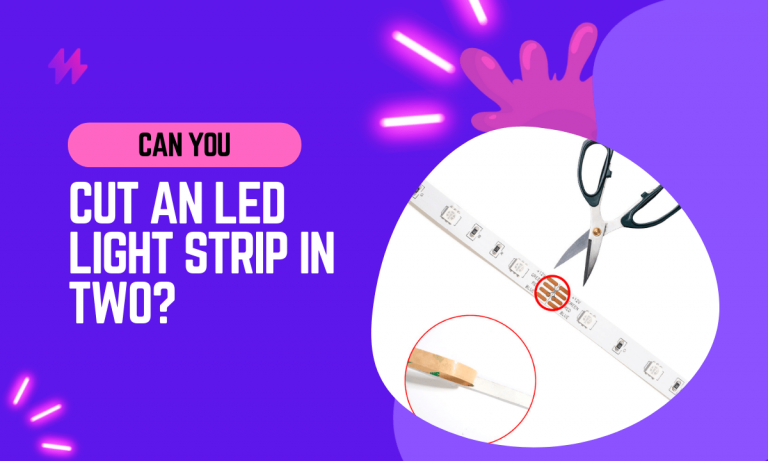Do LED Strip Lights Get Hot?
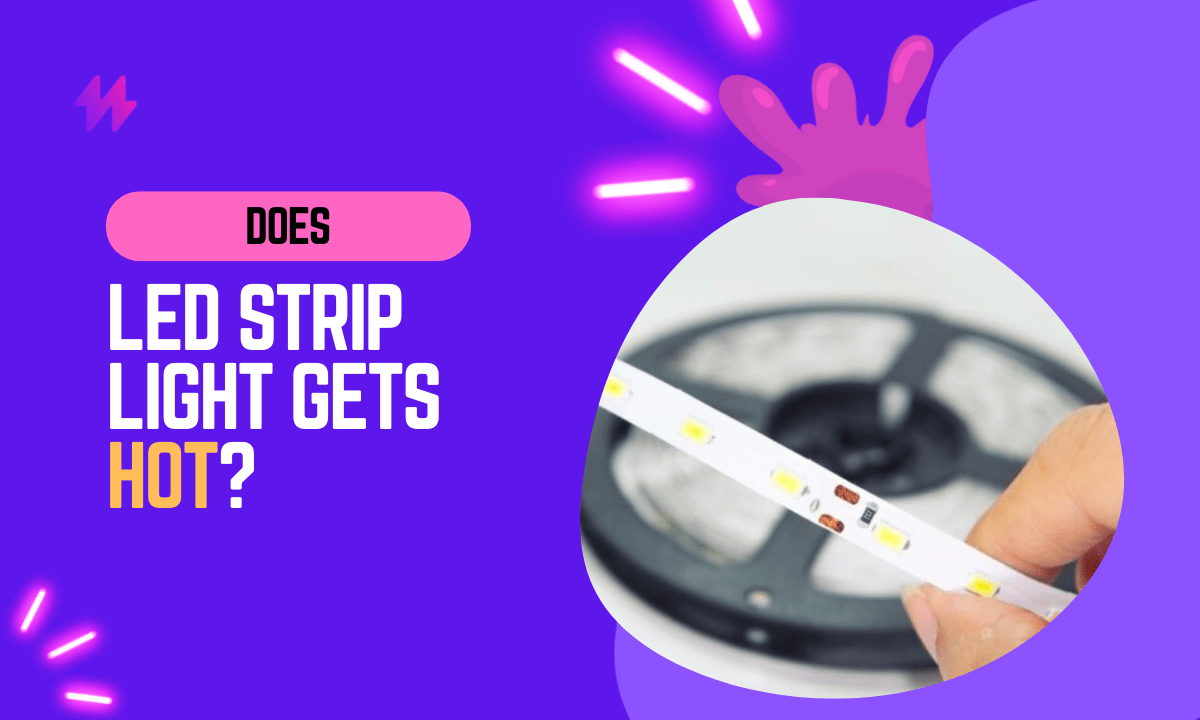
Are you wondering whether LED strip lights get hot or not? This blog post provides answers to your question and offers practical tips to minimize heat from your LED light strips. Discover how LEDs generate heat and ways to avoid overheating in this informative guide.
LED light strips are a great way to add some extra light to your home, and they come in a variety of colors and styles. LED light strips are made up of LEDs, or light-emitting diodes. These diodes convert electricity into light, and they do not generate heat.
In fact, LEDs are actually more efficient than incandescent bulbs because they don’t produce as much heat. However, the amount of heat that is produced by an LED can vary depending on the type of LED and the power level.
While LED strip lights are known for their efficiency and lower heat generation when compared to incandescent light bulbs, it is still important to monitor their operation to ensure optimal performance. By selecting high-quality LEDs and providing adequate heat dissipation, you can enjoy vibrant colors and full brightness without the worry of overheating, making them an excellent choice for modern strip lights and lighting designs.
Understanding LED Strip Lights: Warm, Not Hot
For the most part, LED light strips are not going to get hot enough to cause any damage. However, you may notice that they feel warm to the touch. This is because LEDs produce infrared light, which is a type of heat. While this heat is not strong enough to cause any damage, it can make your LED light strip feel warm.
Also read: Can you sleep with LED strip lights On?
With their good heat dissipation, LED light strips typically do not reach high temperatures that could lead to damage or hotness similar to traditional bulbs. The efficient design of light emitting diodes ensures that the infrared emission remains minimal, making them a safe and effective choice for various lighting applications, including cabinet lighting and contour lighting.
Do LED Strip Lights Get Hot? Understanding Temperature and Safety
The simple answer is yes, they do. LED strip lights will generally get warm to the touch to hot. Factors depend largely on the installation, type of LED, and their surroundings.
For example, if your LED strip lights are installed in an enclosed space such as beneath a cabinet, the heat will have nowhere to dissipate too, and will eventually make the LEDs very hot.
This is why it’s important that you choose an LED with lower power consumption and install them in well-ventilated areas.
As for the type of LED, there are 2 main types being used in LED strip lighting, 3528 and 5050. The number represents the width of the chip in millimeters.
- A 3528 LED has a smaller chip which means it emits less light and doesn’t get as hot.
- A 5050 on the other hand has a larger chip which gives off more light but also gets hotter
You may also like: Do LED Bulbs Get Hot Too?
Indeed, the installation of LED strip lights requires careful consideration to prevent overheating, particularly in enclosed spaces. The good news is that with the right power supply and choosing LED drivers designed for less heat generation, you can ensure that your LED lighting remains efficient and cool to the touch, allowing for safe use in various applications like RGB lighting and cabinet lighting.
Understanding LED Strip Lights: What Temperature Do They Get?
The answer to this question really depends on the factors we discussed above. In general, though, you can expect your LED strip lights to get anywhere from 80-100 degrees Fahrenheit (27-38 degrees Celsius).
Of course, if they are installed in an enclosed space or not well-ventilated, they could get much hotter than that.
Proper ventilation is crucial when using LED strip lights to avoid higher temperatures that could lead to issues. Although LED technology, like SMD LEDs, is much cooler than incandescent lamps, monitoring their heat output is essential to maintain optimal performance, particularly in the lighting industry where safety is paramount.
Are Hot LED Strip Lights a Safety Concern?
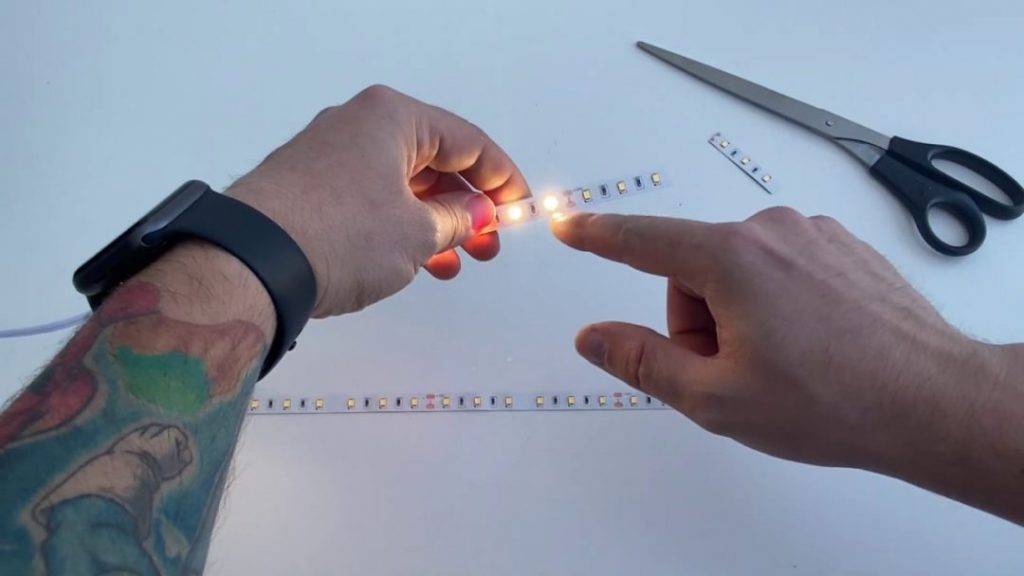
Hot LED strip lights are not dangerous as long as you take the proper precautions. As we mentioned before, it’s important to choose an LED with lower power consumption and install them in well-ventilated areas.
You should also be careful not to touch the LED strips while they are turned on as they can get very hot. If you do need to touch them, make sure to turn them off and let them cool down first.
Must read: Do LED Light strips attract bugs?
When considering LED strip lights as your lighting choice, it’s essential to understand the wattage they consume and how they serve as effective light sources. Many users wonder, “do LED strip lights get hot?” and the answer largely depends on factors such as proper installation and the quality of the LED components used. Choosing options like Hitlights premium products can ensure that several LEDs work efficiently while producing less heat, thus minimizing any risk associated with overheating. By selecting a strip light that converts light effectively and utilizing an appropriate power source, you can enjoy the benefits of vibrant color temperature without compromising safety.
Effective Methods for Reducing Heat from LED Strip Lights
To minimize the heat generated by your LED light strips, there are several steps you can take.
One is to choose an LED with lower power consumption. Another is to install them in well-ventilated areas.
If you are experiencing problems with excessive heat from your LED light strips, using a heat sink may be a solution. A heat sink will help to dissipate the heat away from the LEDs, which can help to reduce the temperature.
There are a variety of heat sinks available, so be sure to choose one that is compatible with your LED strip lights. Installation is usually quite simple, and most heat sinks come with instructions.
Another option is to use a fan to help cool the LEDs. This is especially effective if you are using multiple strips of LEDs or if they are installed in an enclosed space.
Fans can be mounted directly to the LED strip light or placed in the area to create airflow. Be sure to choose a fan that is rated for the correct width of your LED lights.
If you’ve broken LED light strips, don’t worry; you can use our guide to fix them.
To ensure that your LED strip lights perform optimally, it is essential to select a strip light that converts power efficiently while also considering the total wattage, especially when integrating them with flood lights or a 100-watt driver. Monitoring their heat output and providing adequate ventilation or cooling methods will contribute significantly to maintaining a safe environment and achieving the desired look for your lighting setup.
Final Thoughts on LED Strip Lights: Heat Concerns and Safety
In conclusion, while LED strip lights are celebrated for their energy efficiency and long lifespan, understanding their heat generation is crucial for both safety and performance considerations. Compared to traditional incandescent or halogen lights, LEDs operate at a significantly lower temperature, which is one of their primary advantages. However, it is a misconception to assume that they do not generate heat at all. LED strip lights do produce heat, but the amount is considerably less and is often dissipated through the copper strip that forms part of their design. Proper handling and installation ensure that this heat does not become a hazard or diminish the lifespan of the LEDs.
Moreover, to further mitigate any potential issues related to heat, it is important to ensure that LED strip lights have adequate ventilation and are not enclosed in airtight fixtures unless specifically designed for such setups. Installing them on surfaces that can act as heat sinks, such as metal channels, can also help dissipate heat effectively. For applications where LED strips are expected to run for extended periods, considering higher-grade strips with thicker and more robust heat sinks can be a wise precaution. By acknowledging and managing the heat production of LED strip lights, users can maximize their efficiency and longevity, ensuring these lighting solutions provide not only aesthetic enhancement but also reliable and safe performance in various settings.
Do LED Strip Lights Get Hot | The Temperature of LED Strip Lights
LED strip lights are designed to be efficient, but they can generate heat under certain conditions. The question often arises: Do LED Strip Lights Get Hot? Although LED technology converts a significant portion of energy into light, some energy is inevitably lost as heat. Factors such as the quality of the strips, their installation environment, and the duration of use all influence the temperature of the strip lights. Proper ventilation and adherence to recommended installation practices can help mitigate excessive heat. Understanding how LED strip lights work is essential for ensuring both energy efficiency and safety.
Do LED Strip Lights Get Hot | Factors Influencing LED Strip Light Temperature
The heat generated by LED strip lights largely depends on their design and power consumption. While LED technology is known for its energy efficiency, the process of electricity converting to light can still produce a degree of heat. As strip light converts electrical energy into light, some amount of heat is emitted. This heat output is typically lower compared to traditional lighting options, but users often wonder, do LED strip lights get hot enough to cause concern?
Another critical factor influencing the temperature of LED strip lights is their installation environment. Poor ventilation or enclosing the strips within confined spaces can lead to heat buildup. The quality of materials used, including the backing and any adhesives, can also impact heat dissipation. These factors together contribute to the overall temperature behavior of the lights, raising the question: do LED strip lights get hot during prolonged use?
Measuring the Heat of LED Strip Lights
Heat measurement is essential for understanding how hot LED strip lights can get during operation. To determine if LED strip lights get hot, users can utilize infrared thermometers or thermal imaging cameras. These tools provide precise temperature readings, helping to identify any potential overheating issues. Regular monitoring can assist in maintaining a safe environment, ensuring the strips function efficiently without incurring damage.
It is crucial to note that while many LED strip lights operate at lower temperatures than traditional bulbs, they can still experience heat buildup under certain conditions. Factors such as the quality of the strip, the environment, and the way they are installed can influence the heat levels. Understanding whether LED strip lights get hot is vital for effective usage and can prevent hazards associated with excessive heat during prolonged operation.
Safety Measures for Using LED Strip Lights
The question “Do LED Strip Lights Get Hot?” often arises among users concerned about their safety and efficiency. Various factors can influence the temperature of LED strip lights, such as the quality of the strips, the length of the installation, and the environment in which they operate. Understanding these elements is crucial for ensuring safe usage. Recommended installation practices include using appropriate power supplies and ensuring proper ventilation to avoid overheating. Recognizing signs of overheating, such as discoloration of the strips or a burning smell, is essential for maintaining safety and preventing potential hazards. By following these guidelines, users can effectively mitigate risks associated with LED strip light heat.
Recommended Installation Practices
Proper installation of LED strip lights is crucial to minimizing heat accumulation. Ensuring adequate ventilation can help in addressing the question of do LED strip lights get hot. Installing the strips on a surface that dissipates heat effectively, like aluminum channels, can further reduce temperature build-up. Avoid placing them in enclosed spaces without airflow, as this can exacerbate heat issues.
Careful consideration of power supply specifications is another important aspect of installation. Using a power supply rated for the specific wattage of the LED strips can prevent overheating. It’s essential to follow the manufacturer’s guidelines for installation to ensure safe operation. Addressing the question of do LED strip lights get hot involves understanding that quality installation practices can create a safer environment and enhance the longevity of the lights.
Recognizing Signs of Overheating
One noticeable sign that LED strip lights are overheating is a dimming effect. Users often ask, “Do LED strip lights get hot?” and while LED lights are known for their energy efficiency, excessive heat can lead to a loss of brightness. If the lights appear to be flickering or dimming unexpectedly, it may indicate that they are operating at dangerously high temperatures, which can be harmful to both the lights and surrounding materials.
Another critical sign to watch for is the presence of discoloration on the LED strip or surrounding surfaces. If you observe any yellowing or warping, it’s an indication that heat is accumulating. This can be a direct response to the question, “Do LED strip lights get hot?” as extreme temperatures may cause the adhesive backing to fail or the strip itself to become damaged. Regularly inspecting your LED strips for these signs can help ensure safe and efficient operation.
Comparing LED Strip Lights with Other Lighting Options
LED strip lights are often praised for their efficiency, but a common concern remains: do LED strip lights get hot? Understanding the heat output is crucial when comparing them with traditional light bulbs. Incandescent and fluorescent lights typically generate significant heat during operation, often leading to energy wastage and potential fire hazards. In contrast, LED strip lights produce minimal heat, making them safer for extended use. This difference in thermal output highlights the advantages of LED technology, not only in energy savings but also in maintaining a safer environment. When exploring heat generation in lighting options, it becomes evident that LED strip lights are a superior choice for those concerned about excessive heat.
Heat Output of Traditional Light Bulbs
Traditional light bulbs, such as incandescent and halogen varieties, tend to produce significant heat as a byproduct of their illumination process. The filament inside these bulbs heats up to generate light, leading to a rise in temperature that can make handling them uncomfortable after use. This heat output often raises concerns about safety and energy efficiency, especially in enclosed spaces. In contrast, the question many ask is, “Do LED Strip Lights Get Hot?” The answer generally leans towards minimal heat production compared to traditional bulbs.
The heat emitted by traditional light bulbs can contribute to higher energy costs and potential fire hazards. This excessive heat can also cause damage to nearby fixtures or surfaces if not appropriately managed. While exploring alternatives, it’s essential to consider energy-efficient options like LED strip lights. These lights maintain lower operating temperatures, further prompting individuals to inquire, “Do LED Strip Lights Get Hot?” Understanding the differences in heat output can help consumers make informed decisions about their lighting choices.
Advantages of LED Over Incandescent and Fluorescent Lights
LED strip lights offer significant advantages over traditional incandescent and fluorescent bulbs, particularly in terms of heat management. While many people wonder, “Do LED strip lights get hot?” the answer lies in their efficient design. Compared to incandescent bulbs, which convert a large portion of energy into heat, LEDs operate at a much cooler temperature. This not only minimizes the risk of burns and fire hazards but also makes them safer for versatile installations in various settings.
Energy efficiency is another compelling reason to choose LED strip lights over their incandescent and fluorescent counterparts. The energy consumed by LED lighting is significantly lower, which results in less heat generation. This aspect contributes to their longevity, as reduced heat stress can enhance the lifespan of the lights. Addressing the question, “Do LED strip lights get hot?” reveals that they maintain a cooler profile, promoting more sustainable energy use and reduced electricity costs.
Troubleshooting LED Strip Light Heat Issues
LED strip lights can sometimes generate excessive heat, raising the question, do LED strip lights get hot? Various factors contribute to this heat production, including faulty installation, inadequate ventilation, or using a power supply that exceeds the light strips’ specifications. Users must be vigilant about recognizing these issues, as prolonged exposure to high temperatures may not only affect the lifespan of the lights but could also pose safety risks. Addressing common causes of excessive heat is essential for maintaining the functionality and safety of LED strip lighting in any application.
Common Causes of Excessive Heat
One primary reason for excessive heat in LED strip lights is inadequate ventilation. LED strip lights can produce heat during operation, and a lack of airflow can cause that heat to build up. Users often wonder, do LED strip lights get hot under normal circumstances? While LED technology is more efficient than traditional lighting, poor installation or placement in enclosed spaces can lead to overheating issues.
Another significant factor contributing to high temperatures is the quality of the LED strip itself. Cheaper products may have subpar components that can generate more heat. Consumers should consider their options carefully and ask themselves, do LED strip lights get hot? Investing in high-quality, well-constructed LED strip lights can help mitigate overheating problems and enhance overall performance.
Solutions for Managing Heat in LED Strip Lights
One effective way to manage heat in LED strip lights is by ensuring proper ventilation in the installation area. Poor airflow can contribute to increased temperatures, leading to potential overheating issues. Users often wonder, do LED strip lights get hot during operation? By installing them in a space where air can circulate freely, the heat generated can dissipate more easily, thereby maintaining a safer operating temperature.
Selecting LED strip lights with heat management features can also make a significant difference. Some products are designed with built-in thermal management systems that help regulate their temperature. This is particularly important for users concerned about heat buildup, as it directly addresses the question, do LED strip lights get hot? Opting for high-quality strips and following manufacturer recommendations can minimize heat-related problems and enhance the longevity of the lights.

